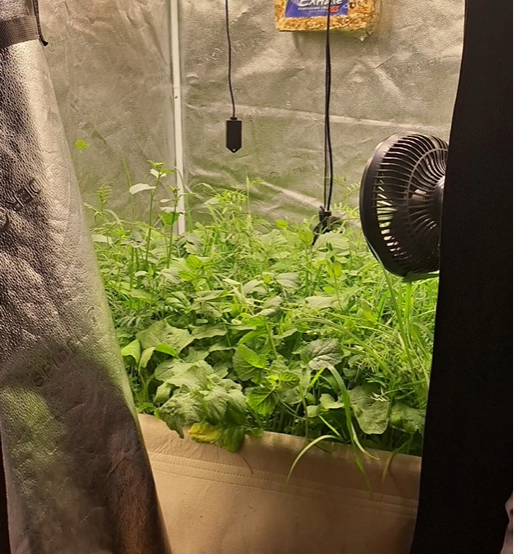Cannabis is labeled as a commodity crop, much like corn. With the logic of this plant being another farmable crop, would typical farming processes, like cover crops and companion crops, benefit cannabis growers?
The decision is split, but the main takeaway is that it all depends on the size of your growing operation. For those with only a few plants in a greenhouse, or in containers, cover crops may not make sense. However, for those with large amounts of space in a raised bed, or directly planting into the soil, these processes might make sense.

What are the differences between cover crops and companion plants?
Cover crops are plantings that are done with the primary purposes of slowing erosion, improving soil health, smothering weeds, and helping to control pests and diseases. In farming, these crops are planted after the previous crop is harvested or as the next year’s crop. They are an “in-between” option aimed at improving the soil.
Companion planting is a method of planting plants together to promote a more dynamic growing ecosystem. Much like with cover crops, companion plants come with a variety of benefits such as pest prevention, nitrogen pulling, and feeding microbes. It is important to find the companion plant that works with your cannabis plants, rather than those that may take nutrients from it.
Sometimes cover crops can be confused with companion planting. Cover crops are meant to be in between your plantings, not alongside. Companion planting is alongside your cannabis plantings. Choosing a cover crop as a companion crop may cause more competition than benefits.

The Benefits of Cover Crops
The biggest concern for many growers is Nitrogen. As a heavy eater that needs a lot of Nitrogen within its nutrient uptake, Cannabis can often deplete the soil of these nutrients. It may be beneficial to plant Nitrogen-fixing crops, such as legumes, in the off seasons to ensure the soil is balanced. However, many of these soil benefits do not come until after the plant has finished growing and died off.
Cover crops can invite beneficial microbes and microorganisms into your soil. These microbes are vital to the uptake of nutrients. They keep the soil alive and continuously feed your plants by making nutrients more available in a form that plants require. A cover crop can provide sugars to the microbes, encouraging their presence within the soil.
Different crops work in different ways. Some encourage the presence of insects to combat destructive pests. Some help fight soil-borne diseases. While others carpet your garden to keep weeds from taking over during your off-season. Cover crops can help keep your soil healthy between your cannabis-growing seasons.
If you choose to use a cover crop, be sure to fully investigate the benefits of different types. For example, legumes such as clover, alfalfa, beans, and lentils are great for fixing nitrogen levels in your soil. Others, such as buckwheat, will grow quickly and cover the garden to keep out weeds.

The Potential Problems of Cover Crops
Cover crops are not intended to grow side-by-side with other plants. This means that it may not fit in with your growing schedule if you have a fast turnaround. In many cases, you will have to wait until the crop dies to get the benefits to the soil, such as with Nitrogen-fixing crops. Additionally, if you use new soil every time and plan to continue with that route, you will not get the full benefit of a cover crop.
You have less control over the nutrients when you depend on cover crops for balancing your soil or preventing weeds. Many growers prefer to have full control over their growing media. To see a true change in the balance of your soil, you may need to give your soil a boost even with cover crops. However, including something like a liquid biological into your soil along with a cover crop may allow for those cover crops to truly work their magic.
Do Your Research Before You Plant
As with any changes to your planting process, you will want to research fully the benefits and potential pitfalls of the chosen method and plants. Soil works best for your plants when it can keep microbes balanced and healthy to provide those valuable nutrients. Be careful not to plant competing feeders in the same space to avoid draining your soil of those all-important nutrients you’re trying to promote. Consider your space, schedule, and fertilization schedule when choosing a cover crop or companion planting.
Need more advice or looking for a soil balancing liquid biological? Contact our experts!


